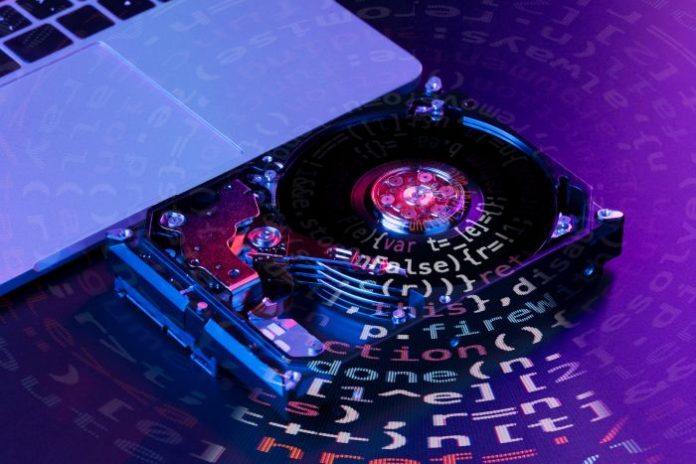Every office has its weak link. It’s rarely the Wi-Fi, the dusty monitor in the corner, or even the GPU that everyone likes to point fingers at. More often than not, the real culprit slowing everything down is the storage drive. When the part responsible for feeding data to your apps starts crawling, neither extra RAM nor a powerful processor can save the day.
And here’s the kicker: businesses running AI models, editing video, or crunching through mountains of data simply don’t have the luxury of slow storage anymore. The push for faster, more reliable, and secure drives isn’t just steady – it’s exploding. Still, a lot of IT teams hang on to outdated drives, squeezing every last drop out of them until the inevitable crash lands.
So how can you tell when it’s time to retire that old drive and move forward? Let’s break down five clear signs that your storage needs an upgrade – and why waiting too long might end up costing you more than the upgrade itself.
Table of contents
1. For Managing Productivity Stalls
One of the clearest indicators is the growing drag on everyday tasks. Systems take minutes instead of seconds to boot. Complex files crawl open. Software freezes during peak usage, and even simple updates feel like heavy lifting. This “silent bottleneck” doesn’t always announce itself loudly. At first, you notice only slight delays. Then, as workloads increase, these delays accumulate into hours of lost productivity. For industries like finance or design—where milliseconds can shape outcomes—this becomes unacceptable.
Upgrading to NVMe SSDs (Gen4 or Gen5) removes this choke point. With ultra-low latency and high IOPS, modern SSDs don’t just speed up operations—they make them seamless. In AI or data analytics environments, where real-time access is critical, storage is no longer just a component. It’s the bloodstream of the system.
2. For AI Requirements for Older Devices
Artificial intelligence has transformed how businesses work, but few realize that GPUs and CPUs can only deliver if the storage keeps up. Training models, streaming high-volume data, or running predictive analytics requires drives that can move terabytes without hesitation.
If your storage drive can’t handle parallel reads and writes efficiently, your AI systems will choke. Tasks that should take hours may stretch into days. This is more than an inconvenience – it undermines competitiveness.
Modern NVMe SSDs, especially those designed for enterprise, are built to satisfy AI’s appetite. With read/write speeds several times higher than SATA or SAS drives, they ensure your infrastructure doesn’t collapse under data hunger.
IDC projects global data volume will reach 175 zettabytes by 2025, and AI adoption is accelerating that timeline. The question isn’t whether you need more storage bandwidth—it’s when your current setup will fail to keep up.
3. For Scaling from a Laptop to a Data Center
Not all upgrades are born equal. For an individual professional, the warning sign might be a laptop running out of storage mid-project. For SMBs, it’s accounting software slowing down or CRM systems crawling during peak hours. For enterprises, it’s storage racks maxing out capacity or struggling with mixed-use demands.
The symptoms vary, but the root cause is the same: your current storage drive no longer matches your workload. The market now offers drives in virtually every shape and size – 2.5-inch SATA SSDs for everyday use, M.2 modules for slim laptops, and U.2 or E3.S drives for dense enterprise racks. Capacities stretch up to 61.44TB per drive, a scale unthinkable a decade ago.
Ignoring the mismatch between your device and its storage drive is like forcing a sports car to run on low-octane fuel. The machine works, but not at the level it was designed for.
4. Downtime and Risk Management
Storage upgrades aren’t just about performance. They’re about risk management. Outdated drives carry security vulnerabilities, higher failure rates, and rising energy consumption. Mechanical drives, in particular, burn more power and generate more heat, inflating cooling costs in data centers.
Then there’s the cost of downtime. Gartner estimates the average cost of IT downtime at $5,600 per minute for large organizations. A failed drive in the middle of a product launch or during AI model training isn’t just a technical glitch – it’s a financial nightmare.
By comparison, modern SSDs with self-encryption, TCG-OPAL compliance, and high DWPD endurance deliver both reliability and resilience. Inaction, ironically, often costs more than the upgrade itself.
5. Future Proofing Your PC System
Data demand isn’t linear – it’s exponential. Every click, every video, every transaction generates more digital weight. Businesses that fail to anticipate this curve find themselves trapped in cycles of emergency fixes instead of strategic upgrades.
Signs of future shock include constant storage “full” alerts, delays in adopting new applications, or entire projects shelved due to lack of capacity. For creative studios, think of Pixar’s need to switch to SSD arrays to handle rendering workloads. Without the shift, movie timelines would have collapsed. For streaming giants like Netflix, scaling without high-performance NVMe infrastructure would have been impossible.
The lesson? If storage isn’t part of your future-proofing strategy, your competitors are already two steps ahead.
What Experts Do for Their Storage Needs
Plenty of industries already know the stakes. Trading firms invest in lightning-fast drives because a single millisecond can mean millions. Healthcare systems deploy NVMe to process scans faster and improve patient care. Media houses shift entire production pipelines to SSD arrays just to hold deadlines intact.
The message remains the same across the board: upgrading storage isn’t a nice-to-have – it’s the pivotal point of digital competitiveness. Companies like TechAtlantix IT hardware solutions reflect this shift, offering not just the latest NVMe drives but also trustworthy refurbished options for budget-sensitive teams. The choice isn’t between upgrading or standing still. It’s between growth and being left behind.
Conclusion
At its core, storage is invisible. When it works, no one notices. When it lags, everything else falters. The five signs you need to upgrade your storage drive—sluggish performance, AI slowdowns, mismatched capacity, rising risks, and looming future shock—aren’t just technical inconveniences. They’re strategic warnings.
In industries where speed equals profit and downtime equal loss, upgrading storage isn’t a cost, it’s an edge. A trading firm cutting execution time by milliseconds, or a design studio halving render time, gains more than efficiency; it gains competitive ground.
The silent bottleneck doesn’t fix itself. The appetite of AI won’t shrink. And the future of data won’t slow down. The only question that remains is: will your storage drive keep pace—or will it quietly hold you back?











